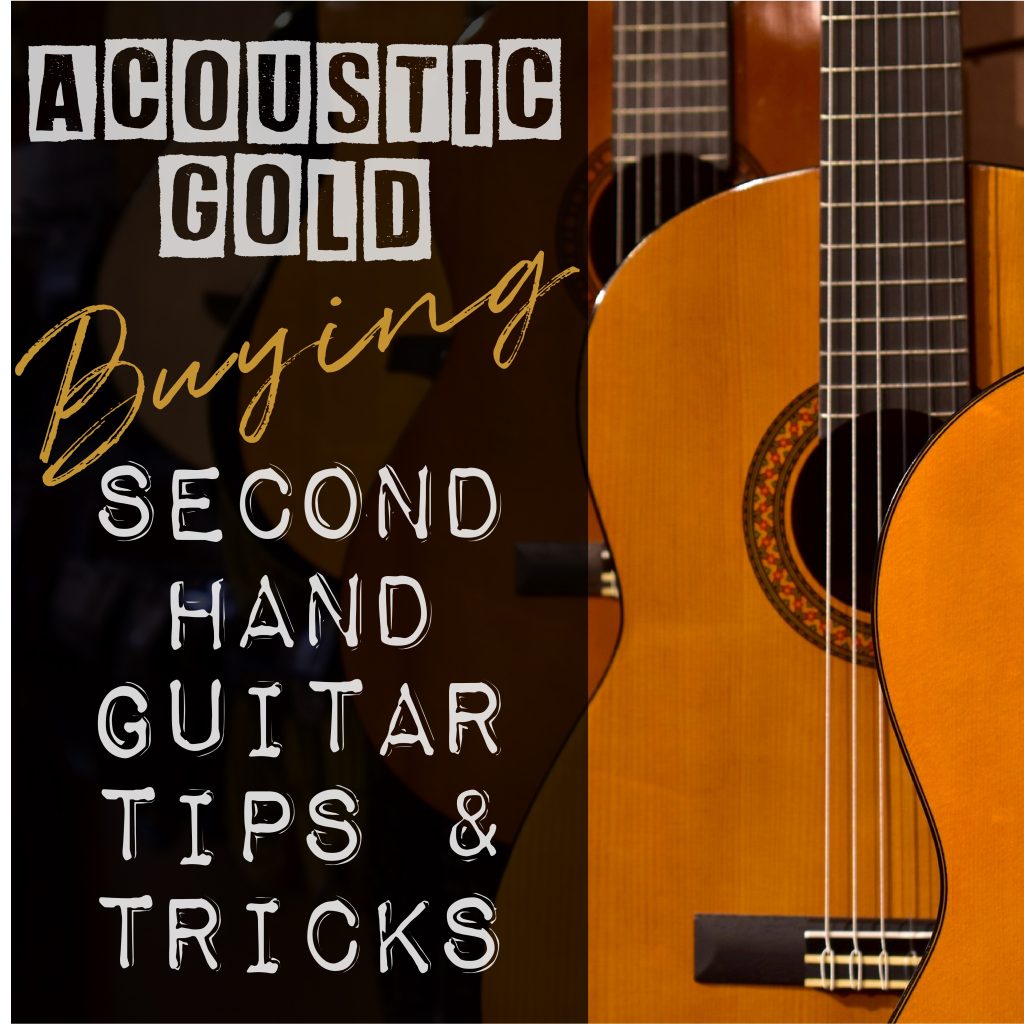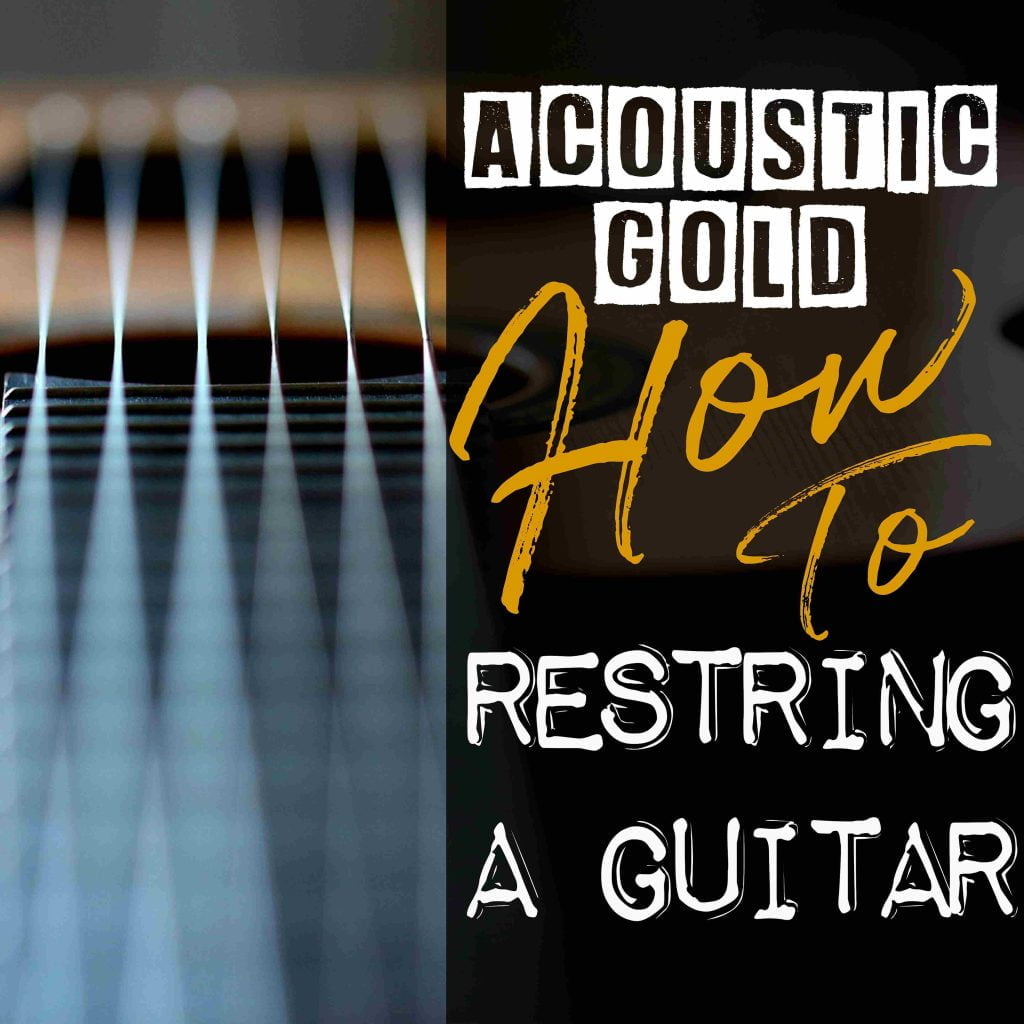Last Updated on January 21, 2024 by Victor Estevez
If you’re in the market for a guitar, you might wonder whether to buy a new or used one. While there are benefits to buying a new guitar, there are also many advantages to buying a used guitar, like getting a better deal, or the often unique character and sound of a played-in instrument.
When buying a second-hand guitar, check for physical damage, playability, sound quality, and hardware condition; also verify the guitar’s authenticity and review its maintenance history. Ensure it feels comfortable to play and aligns with your musical needs.

In short, it’s important to be informed and prepared. This guide will provide you with everything you need to know about buying a used guitar. Once you have found your beauty, make sure you know how to care for it, so it stays in top condition.
So whether you’re in the market for an acoustic or electric guitar, read on to make sure you get the best deal possible.
What to Look for When Buying a Second-Hand Guitar?
Before you begin shopping for a used guitar, it’s important to consider the factors that will influence your purchase. Here are some things to keep in mind:
1. Know what you want: Before you begin your search, consider what you want out of your guitar. What kind of music do you want to play? What style of guitar do you prefer? What is your budget?
2. Research different brands and models and the market value: Once you’ve determined your needs and preferences, research different brands and models and narrow down on one or two. You can do this by reading reviews, watching video demos, or talking to other guitarists. Research the market value of your desired guitar.
3. Identify signs of wear and tear: Once you’ve found your guitar. It is always best to look at it in person, if possible. Check the guitar for any visible signs of wear and tear, such as scratches, dents, or cracks. Also, check for authenticity!
4. Check for structural damage/ playability: Inspect the guitar for any structural damage, such as a warped neck or loose tuning pegs. Make sure the guitar is playable and feels comfortable to hold.
5. Make a price offer: Buying second-hand is not like buying at a store, negotiation is key. Know its market value, and use wear signs/damage as leverage to discuss a lower, fair price with the seller. Start lower than what you are willing to pay. Be respectful and prepared to walk away if the price doesn’t meet your expectations or budget.
Looking for an Acoustic Guitars
Acoustic guitars are popular for their warm, natural tone and versatility. Especially if you are looking for a solid wood model, a used guitar can have benefits, such as a lower price and a matured sound, as the wood had more time to form with the resonance.
There is a reason why vintage guitars are so popular. And if you are buying a sought-after model it can even act as an investment object over time. Here are some things to keep in mind when choosing and evaluating a used acoustic guitar:

Choosing the right type of acoustic guitar:
- Factors to consider when choosing a body type: Acoustic guitars come in a variety of body types, including dreadnought, concert, jumbo, and more. Consider the sound you want and the style of music you play when choosing a body type. Also, do you want to travel with your guitar? Then maybe a model like this is what you are looking for.
- Selecting the right tone-woods: The tone-woods used in the construction of an acoustic guitar can affect its sound. For example, spruce is a common top wood that produces a bright, crisp sound, while mahogany can produce a warmer, more mellow tone. Have you wondered about the difference between Adirondack and Sitka spruce? Here you find info about that.

Assessing the sound quality of a used acoustic guitar:
When evaluating the sound quality of a used acoustic guitar, here are some things to look and listen for:
- Testing the guitar’s sound and resonance: Strum or pick the guitar and listen for the resonance and sustain. The sound should be clear and even across all strings.
- Checking the guitar’s intonation: Play a few chords up and down the neck to ensure the guitar is in tune and intonates properly. Listen for any buzzing or dead notes.
Evaluate the Condition of the Guitar:
Aging is a good thing for guitars, but if they aren’t stored or cared for properly the guitar can get damaged. Maybe the seller doesn’t want you to know about those damages, as it has an impact on the price. Sometimes they don’t know, because they haven’t looked as closely as you do when they bought it or had it stored for a long time.
But please don’t hesitate to ask for any known cracks or issues before you even look at the guitar. A guitar can also get damaged if strings with a high gauge have been played on it for a long time, so it can be interesting to ask which strings the seller prefers. Here are some additional things to look out for:

Identify signs of wear and tear
Check the guitar for any visible signs of wear and tear, such as scratches, dents, or cracks. While scratches and dents have often just cosmetic value, cracks can have an impact on sound and stability.
Look closely at the back, sides, and top if you see cracks. Areas that are especially prone to cracks are around the bridge, the sound hole, and under the pickguard.
If you use a mirror you can also look at the sound hole and the area under the pickguard from within, if you don’t have a fitting mirror you can also use your phone to take pictures or with the front camera on as a mirror alternative. Also, look closely at the neck especially close to the head plate, as this area is prone to cracks as well.
Checking for structural damage
Inspect the guitar for any structural damage, such as a warped neck or loose tuning pegs or if the top comes up around the bridge. Look at the guitar in profile to see if the neck is straight, you can also feel and see it if you consider the room between the frets and the strings, is it even or is there more distance closer to the sound hole? Make sure the guitar is playable and feels comfortable to hold.

Repaires by a luthier (after a crack) can sometimes hardly be seen. When they are repaired by a professional they won’t be an issue in the future, but think about it. Is it something you don’t mind, or is it something that does tip the scales against the guitar? If it is important to you UV light can help to detect repairs, you could get one of these to help you detect them.
By considering these factors when choosing and evaluating a used acoustic guitar, you can find a guitar that meets your needs and delivers the sound you want.
Looking for Electric Guitars
Electric guitars offer a wide range of sounds and styles and can be a lot of fun to play. Here are some things to keep in mind when choosing and evaluating a used electric guitar:
Understanding the different types of electric guitars:
- Solid body vs. hollow body: Solid-body electric guitars, like the iconic Fender Stratocaster or Gibson Les Paul, are made entirely of solid wood and are often favored by rock and blues guitarists. Hollow-body electric guitars, like the Gibson ES-335 or Gretsch 6120, have a hollow chamber in the body and often have a warmer, more mellow sound favored by jazz and blues players.
- Single coil vs. humbucker pickups: Pickups are the magnets that convert the strings’ vibrations into an electrical signal. Single coil pickups are known for their bright, clear sound, while humbuckers offer a warmer, more powerful tone. Listen to guitars beforehand to find which sound you prefer.

Evaluating the playability of a used electric guitar:
When evaluating the playability of a used electric guitar, here are some things to look for:
- Checking the guitar’s action: Action refers to the distance between the strings and the fretboard. If the action is too high or too low, the guitar may be difficult to play. Check the action at the first and last frets to ensure it is even across the neck.
- Testing the electronics and controls: Make sure the guitar’s electronics and controls, including the pickups, volume and tone knobs, and switches, are working properly. Plug the guitar into an amp and test each pickup and control to ensure they are functioning as they should.
By considering these factors when choosing and evaluating a used electric guitar, you can find a guitar that suits your playing style and delivers the sound you want.
Buying and Negotiating
Once you’ve found the used guitar that fits your needs and preferences, it’s time to purchase it. Here are some things to keep in mind when buying and negotiating for a used guitar:
Where to find used guitars:
- Online marketplaces: Websites like Reverb and eBay offer a wide range of used guitars for sale. While shopping online can be convenient, be sure to thoroughly research the seller and read reviews from previous customers before making a purchase.
- Local music stores: Visiting your local music store is a great way to try out used guitars in person. Plus, you may be able to negotiate a lower price or trade-in an old guitar.
Tips for negotiating the price:
- Knowing the market value: Research the market value of the guitar you’re interested in before making an offer. Look for similar models that have recently sold to get a sense of the going rate.
- Pointing out any flaws or issues: If the guitar has any flaws or issues, be sure to point them out to the seller. This can give you leverage in negotiating a lower price.
By considering these tips, you can save money on your used guitar purchase and ensure that you get a fair deal.
Once you’ve purchased your used guitar, it’s important to maintain and care for it to keep it sounding and playing its best. Here you find some things to keep in mind. If you notice any issues with your used guitar, such as buzzing strings or loose hardware, have it inspected by a professional luthier or guitar technician to ensure it’s playing at its best. Always store the guitar in a room with moderate temperature and humidity levels, away from direct sunlight or extreme temperature changes. Also, consider using a guitar stand or case to keep it stable and protected.
By ensuring maintenance and caring for your guitar, you can help prolong the life of your guitar and ensure it continues to sound and play great for years to come.
Conclusion
Overall, buying a used guitar can be a great way to get a quality instrument at a more affordable price. By doing your research, evaluating the condition of the guitar, understanding the different types of guitars, and taking care of your instrument, you can find a great used guitar that will bring you years of enjoyment. So go out there and find the perfect used guitar for you!




